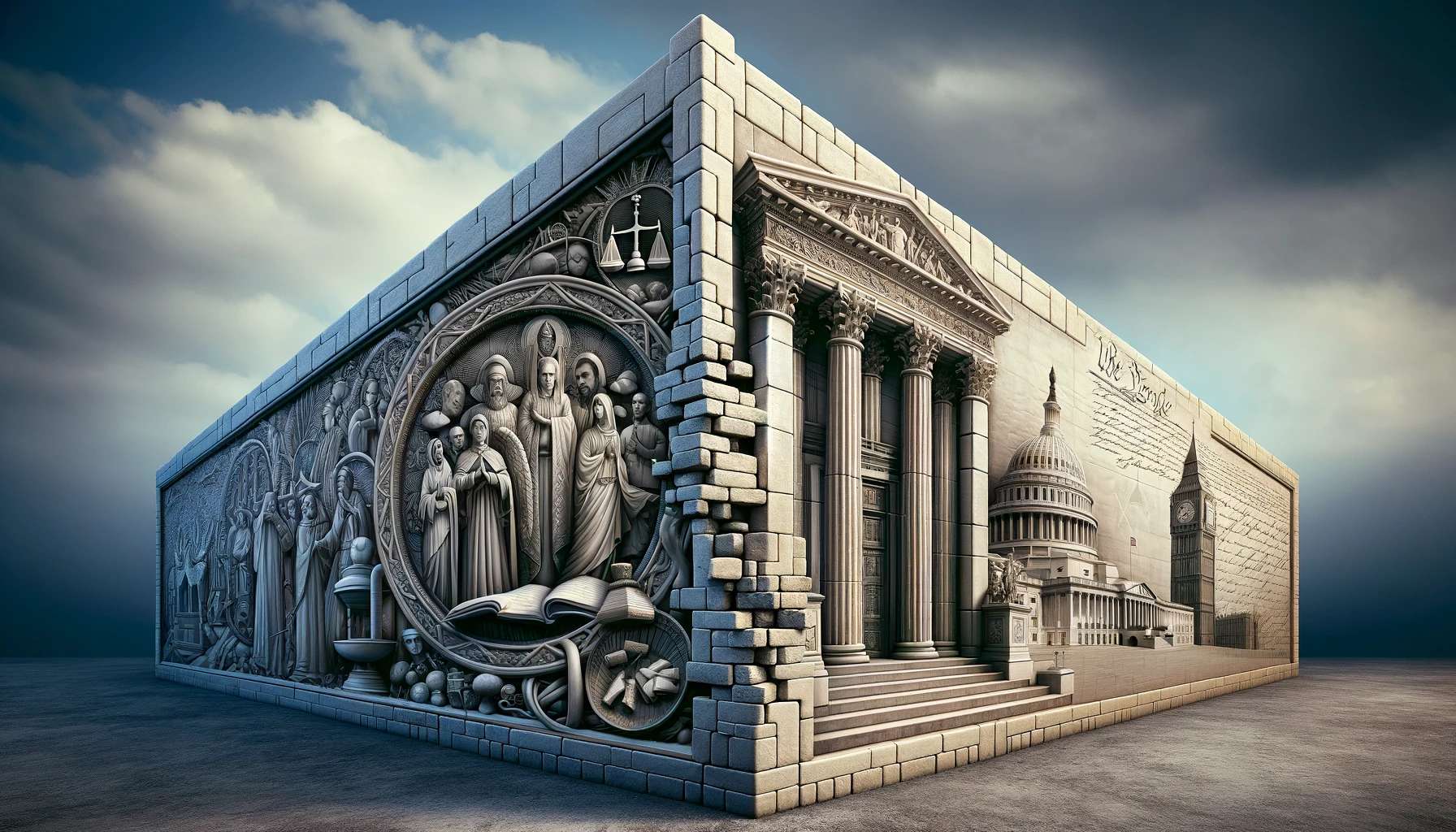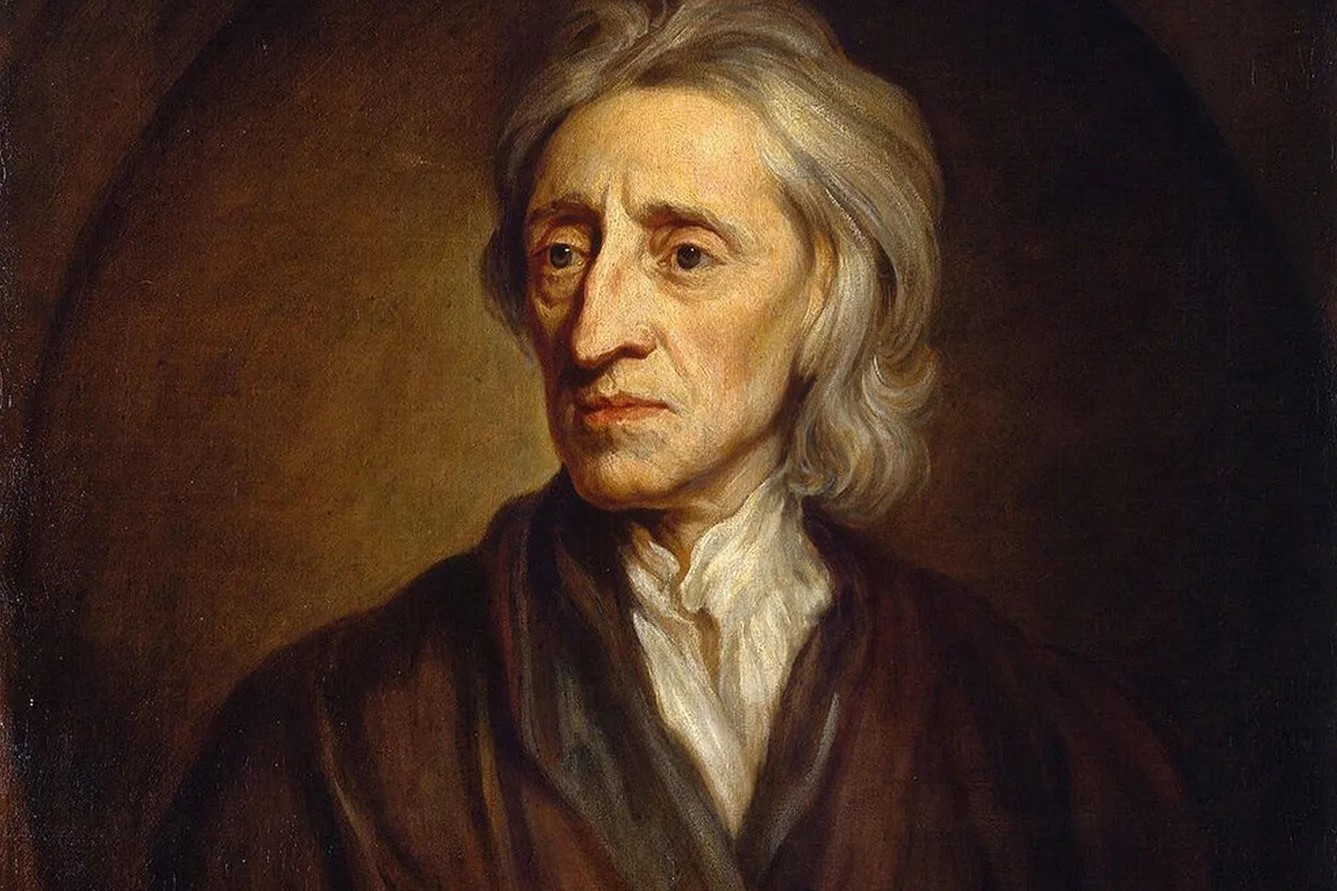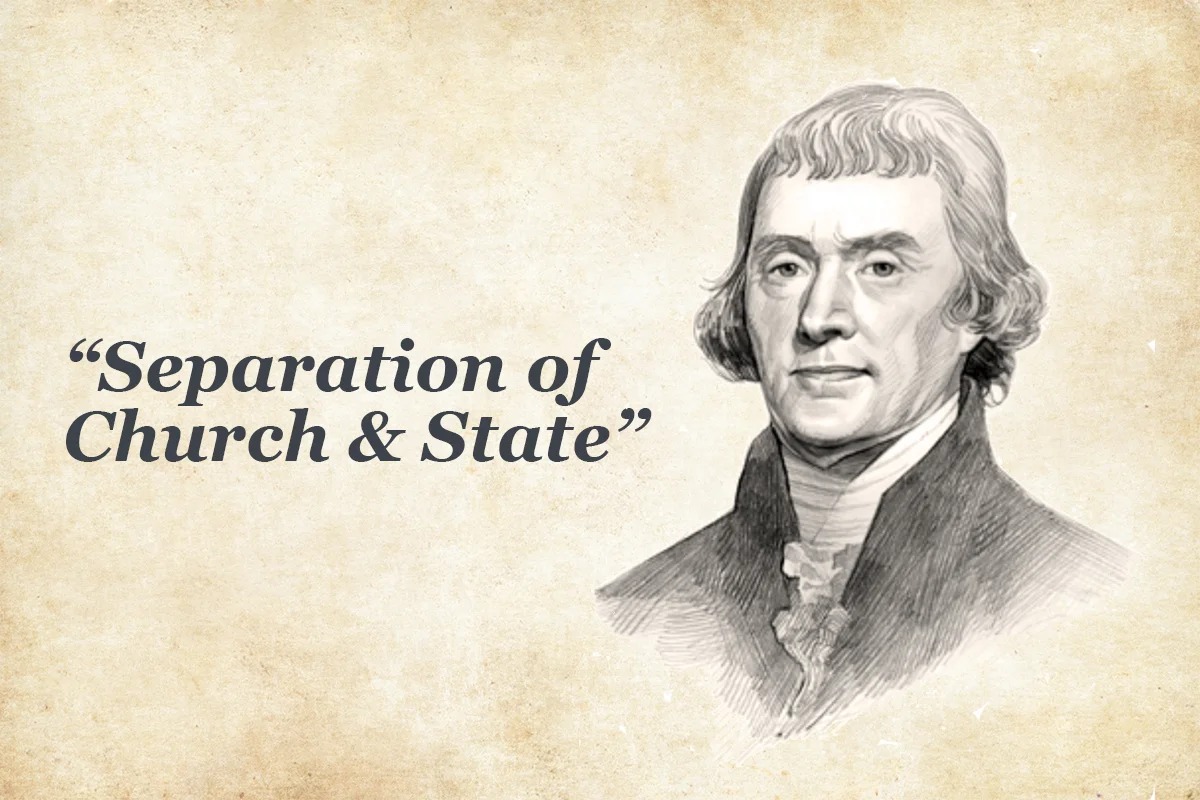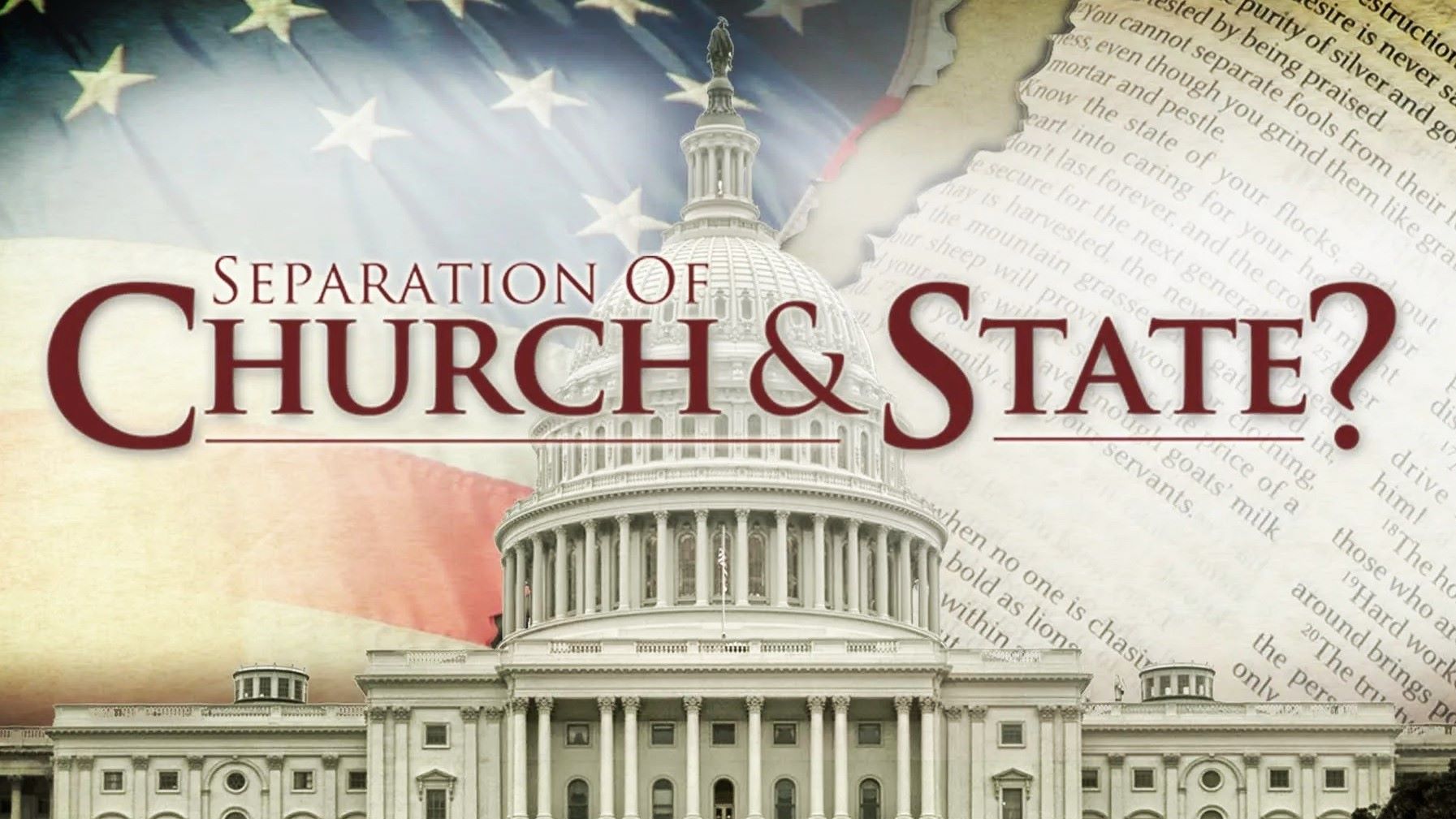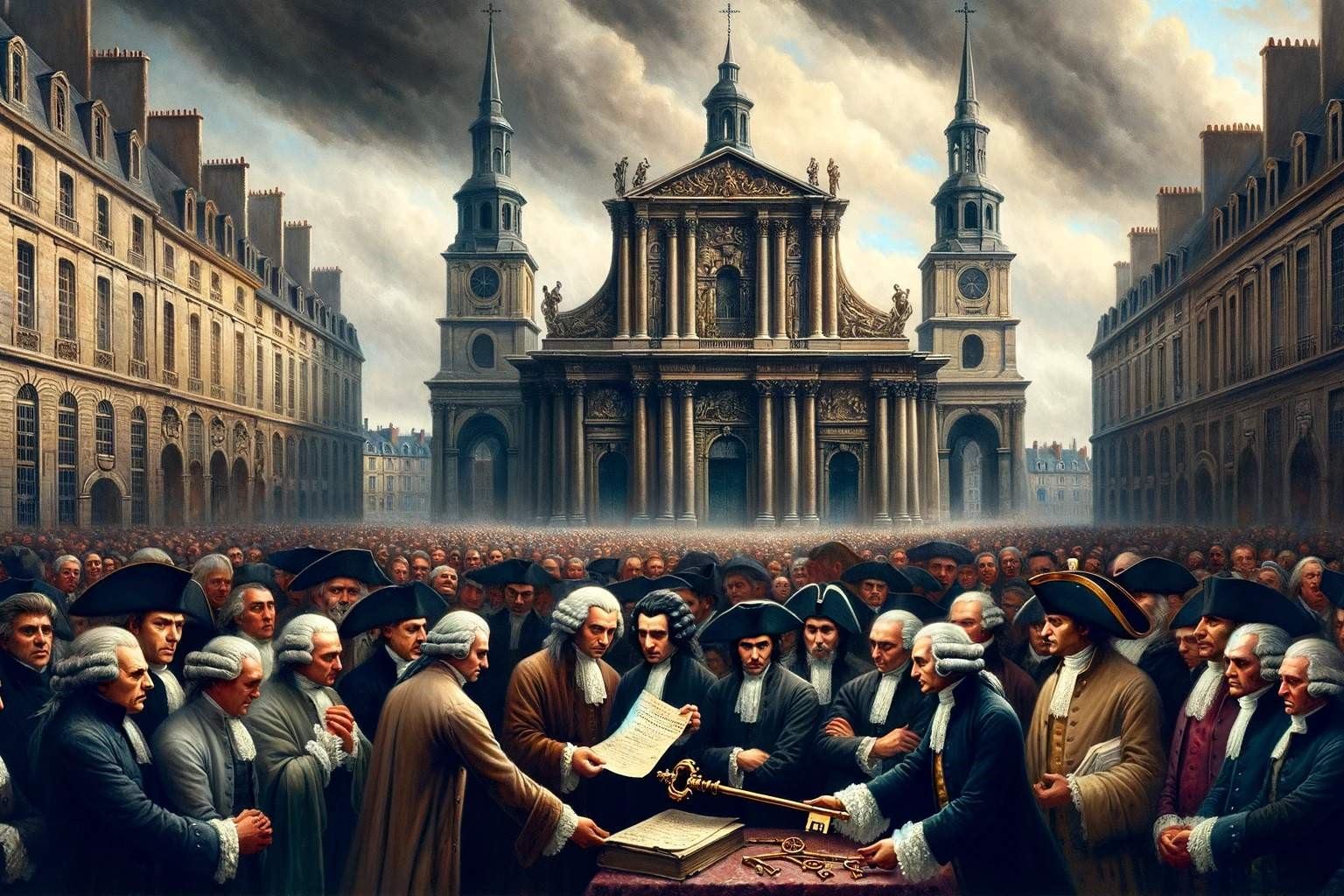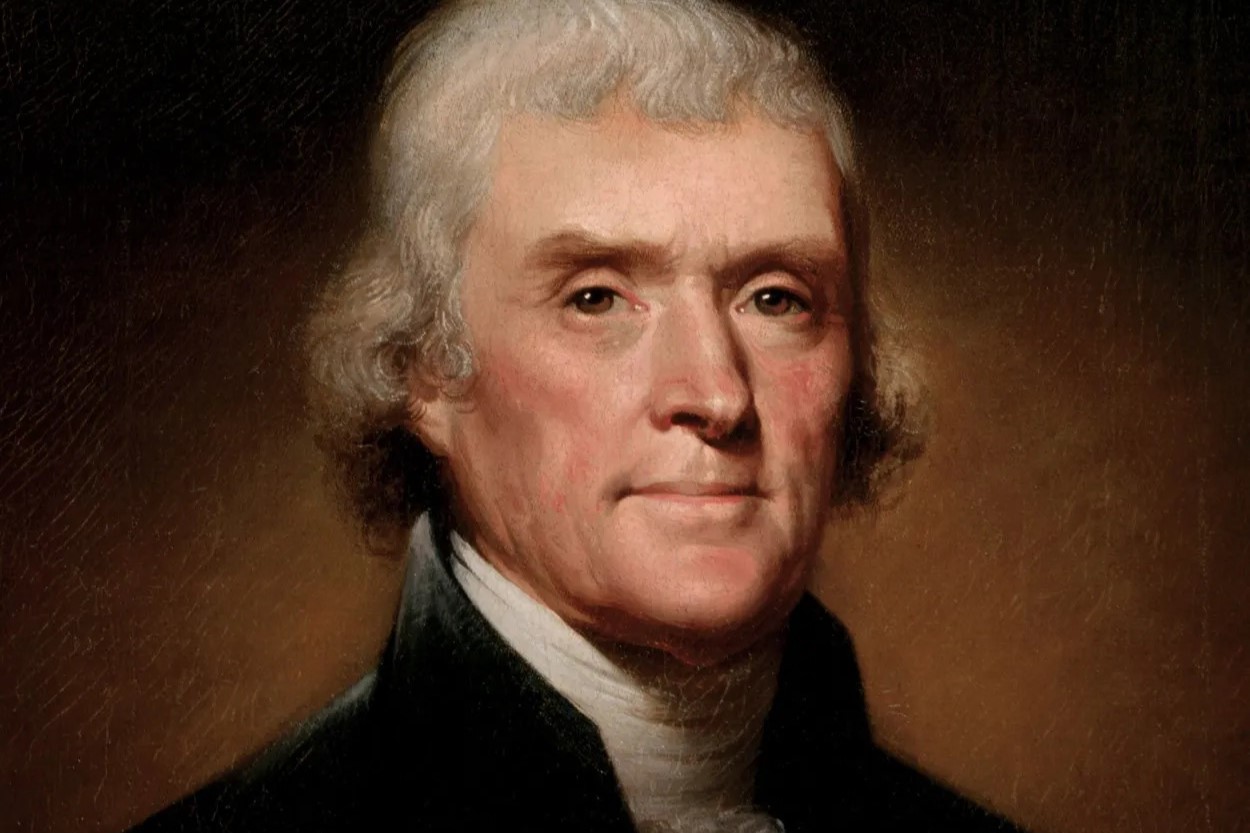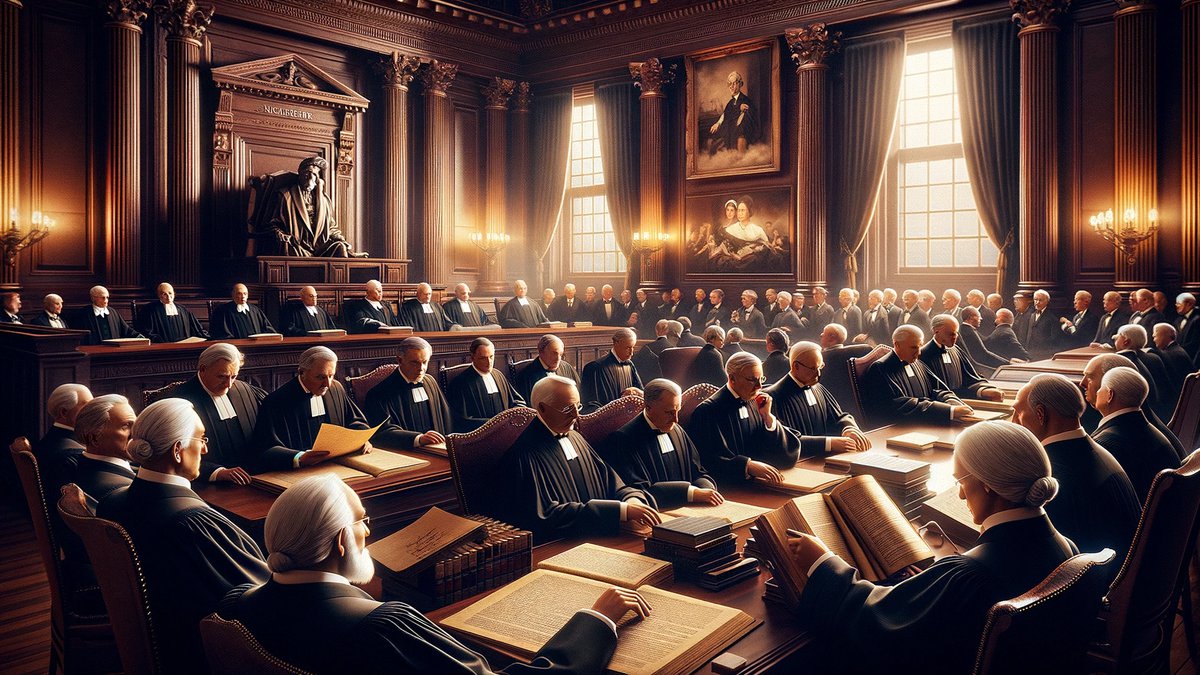Home>Theology and Spirituality>What Does The Phrase Separation Of Church And State Mean
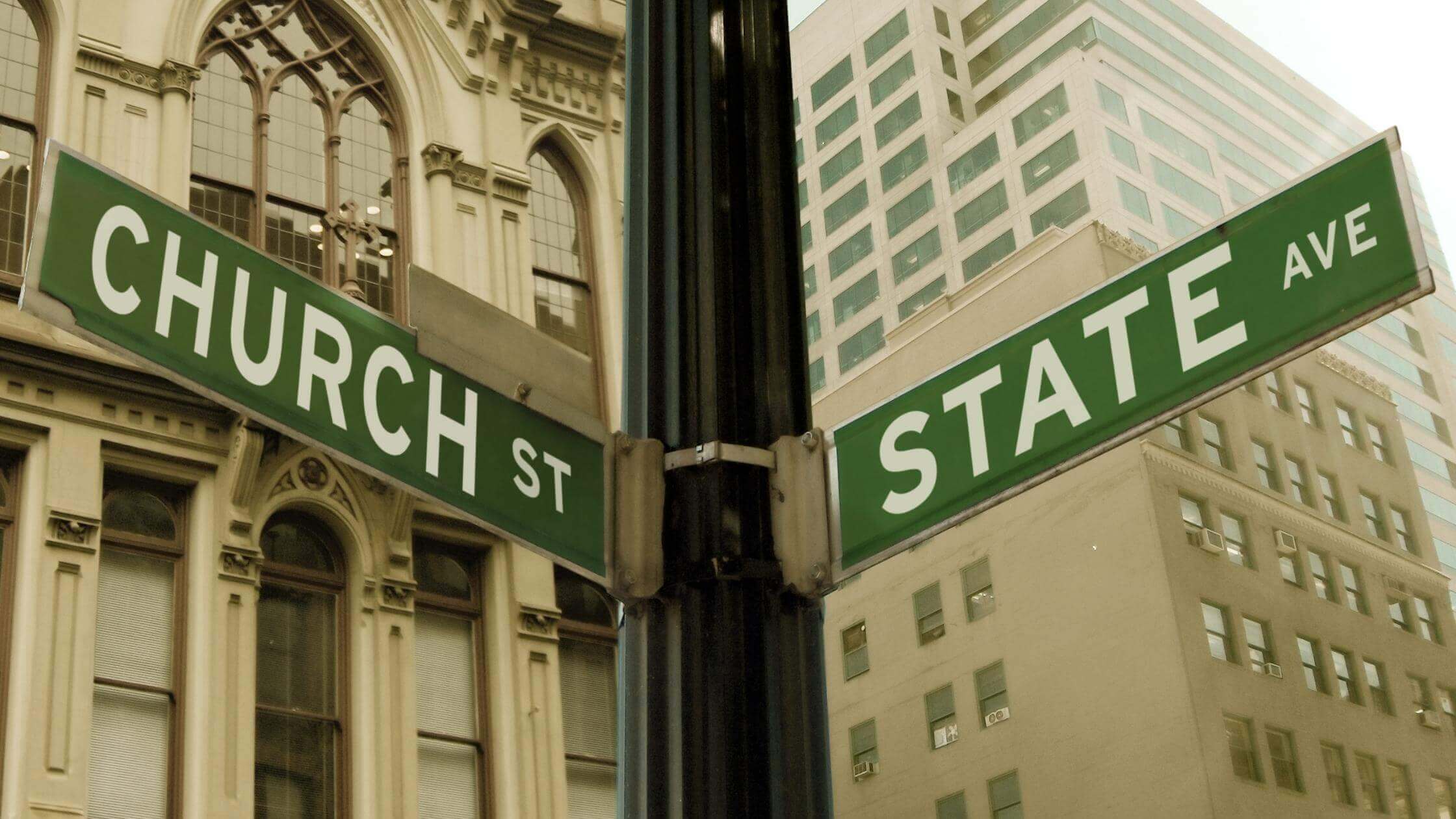

Theology and Spirituality
What Does The Phrase Separation Of Church And State Mean
Published: February 11, 2024
Ericka Andersen, an editor at Christian.net, expertly merges digital strategy with content creation, focusing on faith and societal issues. Her communication skills enhance the platform's engaging narratives, fostering meaningful dialogue on belief's impact on society.
Learn about the meaning of the phrase "separation of church and state" and its significance in theology and spirituality. Understand its impact on society and governance.
(Many of the links in this article redirect to a specific reviewed product. Your purchase of these products through affiliate links helps to generate commission for Christian.net, at no extra cost. Learn more)
Table of Contents
Introduction
The phrase "separation of church and state" has been a topic of significant debate and discussion, particularly in the realms of politics, law, and religion. It encapsulates the idea of maintaining a distinct boundary between religious institutions and governmental entities. This principle is fundamental to the concept of secularism, which advocates for the autonomy and independence of both religious and governmental spheres.
The notion of separating church and state has deep historical roots and has been a cornerstone of democratic societies. It reflects the belief that the state should not favor any particular religion, nor should it interfere with religious practices. Conversely, religious institutions should not dictate governmental policies or hold undue influence over political affairs.
The phrase has become a touchstone for understanding the delicate balance between religious freedom and state authority. It serves as a guiding principle for shaping laws, policies, and societal norms in diverse cultural and religious contexts. The implications of this separation extend beyond legal frameworks, permeating into the fabric of social interactions and individual rights.
As we delve into the origins, interpretations, historical examples, and contemporary debates surrounding the phrase "separation of church and state," it becomes evident that its significance transcends mere legal jargon. It embodies the aspirations of a society that values pluralism, tolerance, and the safeguarding of individual liberties. The interplay between religion and governance is a complex and multifaceted issue, and the phrase "separation of church and state" encapsulates the ongoing dialogue and evolution of this dynamic relationship.
In exploring the multifaceted dimensions of this concept, we gain insights into the intricate tapestry of human civilization, where diverse belief systems intersect with systems of governance. The phrase "separation of church and state" beckons us to contemplate the delicate balance between faith and reason, authority and autonomy, and tradition and progress. It invites us to ponder the timeless question of how societies can uphold the principles of justice, equality, and freedom while respecting the rich tapestry of religious beliefs and practices.
As we embark on this exploration, we will unravel the historical, philosophical, and contemporary underpinnings of the phrase "separation of church and state," shedding light on its enduring relevance in our ever-evolving global landscape.
Origins of the phrase "separation of church and state"
The origins of the phrase "separation of church and state" can be traced back to the writings of early modern philosophers and the historical context of religious and political conflicts. One of the seminal figures associated with this concept is the English philosopher John Locke, whose influential works laid the groundwork for the separation of church and state in Western political thought.
Locke's "A Letter Concerning Toleration" (1689) advocated for the idea that the state should not have the power to impose religious beliefs on its citizens. He argued that individuals should have the freedom to choose their own religious convictions without fear of persecution or coercion by the government. This notion of religious tolerance and the limitation of state authority in religious matters became a cornerstone of the principle of separating church and state.
The phrase itself gained prominence in the United States through Thomas Jefferson, who used it in his famous letter to the Danbury Baptist Association in 1802. In this letter, Jefferson articulated the concept of a "wall of separation between church and state," emphasizing the need for a clear and distinct division between religious institutions and governmental affairs. Jefferson's words have since become emblematic of the American understanding of the relationship between religion and governance.
The historical backdrop of religious wars, persecution, and the intertwining of religious and political authority in Europe also contributed to the development of the concept of separating church and state. The Treaty of Westphalia in 1648, which marked the end of the Thirty Years' War, played a pivotal role in establishing the principle of state sovereignty and religious pluralism. This treaty set the stage for the recognition of diverse religious communities and the idea that the state should not dictate religious beliefs or practices.
Furthermore, the Enlightenment era ushered in a reevaluation of the relationship between religion and government. Thinkers such as Voltaire, Montesquieu, and Rousseau advocated for the separation of church and state as a means to foster individual liberty, rational governance, and the protection of religious diversity.
The phrase "separation of church and state" thus emerged from a confluence of historical, philosophical, and political developments, reflecting a profound shift in the understanding of the proper roles of religion and government in society. Its origins are deeply intertwined with the quest for religious freedom, tolerance, and the recognition of the autonomy of both religious and secular spheres.
Interpretations and implications of the phrase
The phrase "separation of church and state" encompasses a spectrum of interpretations and carries profound implications for the relationship between religious institutions and governmental bodies. At its core, this concept underscores the need to maintain a neutral stance regarding religion within the operations of the state, while also safeguarding the freedom of individuals to practice their faith without undue influence or restriction from the government.
One interpretation of this principle emphasizes the idea of religious neutrality in governance. It advocates for a state that does not endorse, promote, or inhibit any particular religious belief or practice. This interpretation underscores the importance of creating an inclusive public sphere where individuals of diverse faith traditions, as well as those who identify as non-religious, can participate in civic life without encountering discrimination based on their beliefs.
Furthermore, the phrase "separation of church and state" implies the protection of religious freedom and conscience. It serves as a bulwark against the imposition of religious dogma or the restriction of individual liberties by the state. By upholding this separation, societies strive to ensure that individuals have the autonomy to follow their own moral and spiritual convictions, free from governmental coercion or favoritism toward specific religious denominations.
Moreover, the concept of separating church and state carries implications for the institutional autonomy of religious organizations. It underscores the need to shield religious institutions from undue interference or control by the government. This autonomy allows religious communities to govern their internal affairs, uphold their doctrinal teachings, and engage in charitable and educational activities without external encroachment from state authorities.
On a broader societal level, the phrase "separation of church and state" has implications for fostering pluralism and social cohesion. By maintaining a clear boundary between religious and governmental spheres, societies aim to create an environment where diverse religious and philosophical perspectives can coexist harmoniously. This approach seeks to mitigate religious tensions and promote mutual respect and understanding among individuals with differing worldviews.
In essence, the interpretations and implications of the phrase "separation of church and state" underscore the foundational principles of religious freedom, governmental neutrality, institutional autonomy, and social harmony. These facets collectively contribute to the cultivation of a democratic and inclusive society where individuals can express their beliefs, participate in public life, and contribute to the common good without encountering undue religious or political barriers.
Historical examples of the separation of church and state
Throughout history, various societies have grappled with the intricate dynamics of separating church and state, yielding compelling examples that illuminate the evolution of this principle.
Ancient Rome:
In ancient Rome, the concept of separating religious and political authority was exemplified through the division of powers between the state and the College of Pontiffs, a body of high priests responsible for religious affairs. While Roman emperors held significant religious influence, the administration of religious rites and rituals was largely delegated to the College of Pontiffs, showcasing a degree of institutional separation between religious and governmental functions.
The Edict of Milan:
The Edict of Milan in 313 AD, issued by Emperor Constantine the Great and co-emperor Licinius, marked a pivotal moment in Roman history. This edict proclaimed religious tolerance for Christianity, effectively separating the Roman state from its previous hostility toward the Christian faith. The edict laid the groundwork for the eventual establishment of Christianity as the state religion, leading to a complex interweaving of religious and political authority in the Byzantine Empire.
The Magna Carta:
The Magna Carta, signed in 1215, is renowned for its role in shaping the principles of constitutional governance. While not explicitly addressing the separation of church and state, the Magna Carta's emphasis on the rule of law and limitations on royal authority laid the groundwork for the eventual delineation of religious and secular domains in governance. This historical document set the stage for the evolution of legal frameworks that would later influence the concept of separating church and state.
The Peace of Westphalia:
The Peace of Westphalia in 1648, which concluded the Thirty Years' War in Europe, is a landmark example of diplomatic negotiations that reshaped the political landscape. This treaty not only established the principle of state sovereignty but also recognized the autonomy of various religious denominations within the Holy Roman Empire. The Peace of Westphalia laid the foundation for the coexistence of diverse religious communities under secular authority, contributing to the evolving notion of separating church and state.
The United States Constitution:
The United States Constitution, particularly the First Amendment, embodies a definitive example of institutionalizing the separation of church and state. The Establishment Clause and the Free Exercise Clause collectively underscore the government's neutrality toward religion and the protection of individuals' religious freedoms. This constitutional framework has served as a model for many nations seeking to navigate the complexities of religious pluralism within a democratic governance structure.
These historical examples illustrate the diverse manifestations of the separation of church and state, reflecting the complexities and nuances inherent in balancing religious and governmental authority throughout different epochs and cultural contexts.
Current debates and controversies surrounding the phrase
The phrase "separation of church and state" continues to be a focal point of contentious debates and controversies in contemporary society. These discussions encompass a wide array of issues, reflecting the complex intersection of religion, politics, and public policy. One prominent debate revolves around the interpretation of the phrase and its application in specific contexts. Advocates for a strict separation argue that any form of governmental involvement in religious matters violates the principle of religious neutrality and infringes upon individual freedoms. On the other hand, proponents of a more accommodating approach contend that certain forms of government engagement with religious institutions can be permissible, such as in the provision of social services or the recognition of religious holidays.
Another contentious issue pertains to the display of religious symbols and expressions in public spaces and government institutions. Disputes often arise over the placement of religious monuments, the inclusion of prayers in public ceremonies, and the use of religious imagery in official emblems. These debates raise questions about the boundaries of religious expression in the public sphere and the potential for such displays to either uphold or breach the principle of church-state separation.
Furthermore, ongoing controversies surround the intersection of religious beliefs and public policy, particularly in areas such as education, healthcare, and civil rights. Debates over the inclusion of religious teachings in school curricula, the funding of religiously affiliated institutions, and the accommodation of religious objections in matters such as reproductive rights and LGBTQ+ rights underscore the complexities of navigating the relationship between religious convictions and the public good.
The issue of tax exemptions for religious organizations also fuels heated discussions. While proponents argue that these exemptions uphold the autonomy of religious institutions and support their charitable activities, critics raise concerns about the potential for abuse and the unequal treatment of secular organizations. This debate delves into the economic implications of the separation of church and state and the broader question of fairness within the tax system.
Moreover, the rise of religious pluralism and the increasing diversity of belief systems within societies have prompted discussions about how the principle of church-state separation accommodates a wide range of religious practices and worldviews. The need to balance the protection of minority religious rights with the avoidance of government entanglement in religious affairs remains a central point of contention in these deliberations.
As these debates and controversies persist, they underscore the ongoing relevance and complexity of the phrase "separation of church and state" in shaping the dynamics of modern governance, law, and societal norms. The evolving nature of these discussions reflects the enduring significance of navigating the delicate balance between religious freedom and governmental authority in an increasingly diverse and interconnected world.
Conclusion
In conclusion, the phrase "separation of church and state" encapsulates a profound and enduring principle that has shaped the course of history, law, and societal norms. Its origins in the writings of early modern philosophers, the historical context of religious conflicts, and the evolution of democratic governance have contributed to its multifaceted interpretations and implications.
The concept of separating church and state underscores the fundamental values of religious freedom, governmental neutrality, institutional autonomy, and social harmony. It serves as a guiding principle for fostering inclusive and pluralistic societies where individuals can freely express their beliefs, participate in public life, and contribute to the common good without encountering undue religious or political barriers.
Historical examples, ranging from ancient Rome to the United States Constitution, offer compelling insights into the diverse manifestations of the separation of church and state. These examples illuminate the complexities and nuances inherent in balancing religious and governmental authority throughout different epochs and cultural contexts.
In contemporary society, the phrase continues to spark debates and controversies, reflecting the intricate intersection of religion, politics, and public policy. These discussions encompass a wide array of issues, including the interpretation and application of the phrase, the display of religious symbols in public spaces, the intersection of religious beliefs and public policy, and the economic implications of tax exemptions for religious organizations.
As these debates persist, they underscore the ongoing relevance and complexity of the phrase "separation of church and state" in shaping the dynamics of modern governance, law, and societal norms. The evolving nature of these discussions reflects the enduring significance of navigating the delicate balance between religious freedom and governmental authority in an increasingly diverse and interconnected world.
Ultimately, the phrase "separation of church and state" beckons us to contemplate the delicate balance between faith and reason, authority and autonomy, and tradition and progress. It invites us to ponder the timeless question of how societies can uphold the principles of justice, equality, and freedom while respecting the rich tapestry of religious beliefs and practices. As we navigate the complexities of this dynamic relationship, the phrase serves as a beacon guiding us toward a future where the rights and dignity of all individuals, regardless of their beliefs, are upheld and protected within the fabric of society.


